Any critic who could, with a straight face, populate a ten-best list either primarily or exclusively with American films released in one of the worst years in recent memory for homegrown filmmaking at all levels either wasn’t watching enough movies or watching movies well enough. Yet if the various polls and top ten lists that spring up like mushrooms around this time of year (feel free to stomp on ours, if you wish) are to be believed, then only a handful of films—mostly American—mattered in 2010. The Social Network, of course, but also Winter’s Bone, The Kids Are All Right, Toy Story 3, Black Swan, 127 Hours, The King’s Speech, Inside Job . . . That these are films of wildly varying quality—to say the least—is less important to note than the insane herd mentality that has decimated critical film culture. We like The Social Network, but the more one reads about its elevated status as the One Movie That Dares to Say Something About the Way We Live Now, the less convinced we are that those writing about it spent serious time thinking about movies, how they say things, or the way we live now. Likewise, claims that the only worthy adult dramas were spearheaded by Darren Aronofsky, Danny Boyle, Debra Granik, and Pixar only made us more disheartened. Furthermore, in a year when the re-release of a 25-year-old documentary (Shoah) roundly shamed every new theatrical nonfiction film (save for a crafty offering about a boxing gym made by another veteran of the form and a quite unique rethink of the Western starring sheep), our current documentary “renaissance” hardly seemed worth celebrating.
The troubling homogeneity of film criticism is no longer just an outgrowth of Oscar season. None of us are wholly immune to this, but the amount of ink spilled on the same films over and over leads only to stupefying consensus. It can be exhilarating when critics rally together to get behind a movie they believe in (and where were most of them when Bong Joon-ho’s Mother opened in theaters last February?), but it can also create monoliths, and other films wither in their shadow. Every given year will produce plenty of films to love (we’ve wondered in past iterations of this same article whether any year can really be a bad year for movies), and, given how many different ways there are to see films right now, it’s shocking and frightening that the bulk of critics, afraid to go out on a limb, still rally around the same studio-manufactured products simply because (let’s face it) they are readily available.
Of course, rules are rules, and, despite our increased disillusionment with the film community and the changing landscape of filmgoing, we continue to do this top ten as we have in recent years—polling our major contributors from 2010 to determine only the best films that were released only in the United States in the past twelve months (in other words, those films that moviegoers had a chance of seeing theatrically.) The highest ranked film received the most votes, and so on. We’re pleased as punch with the results (four female directors! seven different countries! two are-they-or-aren’t-they docs, neither of them Catfish or Exit Through the Gift Shop!)—these are the kinds of films that we keep trudging to theaters to find. And just in case anyone wonders whether our list was the result of any sort of oppositional stance, rest assured that we polled our guileless contributors well before the onslaught of top tens began unfurling (look, even Social Network made the cut!). We just didn't feel the need to rush it all online just to get there first. —MK & JR
[Capsules written by Matt Connolly, Michael Koresky, Benjamin Mercer, Adam Nayman, Jeff Reichert, Justin Stewart, Andrew Tracy, Elbert Ventura, Chris Wisniewski, and Genevieve Yue.]

1. Alamar
How did Pedro González-Rubio’s devoutly modest film end up at the top of Reverse Shot’s best-of-2010 list? There are many other films in this lineup that are more ambitious, more formally daring or complex, more incisive, more passing strange, more masterful than this charmingly slight tale of father-son bonding set against the admittedly spectacular landscape of Mexico’s Chinchorro coral reef. But level of achievement is only one factor in such an endeavor. What Alamar is—in its lovely casualness, its guileless blurring of documentary and fiction, the unforced enviro-political resonance of its return-to-the-land (rather to the sea) chronicle—is certainly laudable; what it represents is something greater. The ascetic rigor, the honing and refining of style that has typified so many of the great masters of the last two decades (Hou Hsiao-hsien, Abbas Kiarostami, Béla Tarr, Jia Zhang-ke), has come to be complemented by another mode of cinematic resistance that opens up rather than whittles down; whose very ingenuousness is its affront to film-business-as-usual; whose artistry resides less in the ever greater delineation of a singular artistic sensibility than in the delicate channeling of the forces and elements at hand. (It’s little wonder that Apichatpong Weerasethakul, the exemplar of this Rossellinian instinct, typically abjures the designation of “director.”) In a cinema world where hard-and-fast distinctions (New Waves, schools, and the like) condition both creation and reception, Alamar testifies to the endless pliability, the innate and uncontrived complexity of the medium itself—its indefatigable constancy even as its very matter changes. —AT

2. Mother
Though 2010 seemed to mark an enervating creative low point for American cinema, the spirit of classical Hollywood moviemaking lived on, surprisingly, in the Korean film Mother, the latest work from sensational director Bong Joon-ho. From the entrancing, ambiguous dance performed by Kim Hye-ja’s titular character over the film’s opening credits through its haunting final tracking shot, Mother is a master class in the mechanics of narrative cinema—in other words, the use of sound, images, and editing to create suspense and upend expectations. Essentially a murder mystery, about a mentally disabled young man, Do-joon (Won Bin), accused of a horrible crime, Bong’s movie slips, slides, twists, and turns as Do-joon’s ferociously determined mother (Kim) begins her own obsessive investigation of the case in an attempt to exonerate him. New discoveries and revelations come at a furious pace in the perfectly plotted screenplay by Bong, Park Eun-kyo, and Park Wun-kyo; but Bong also knows how to hinge a breathtaking set piece around something as simple as a spilled water bottle. From a pure thriller perspective, Mother is one hell of an exhilarating movie-movie; Bong, though, is more than an expert craftsman. By the time Mother reaches its devastating climax, it reveals emotional and intellectual depths and moral and sociological insights that could shock viewers unfamiliar with his previous movies (including Memories of Murder and The Host). In Kim’s title character, the director and his star, delivering a performance that is nothing short of astonishing, create a woman who is both sympathetic and monstrous—hero and villain, victim and perpetrator. —CW
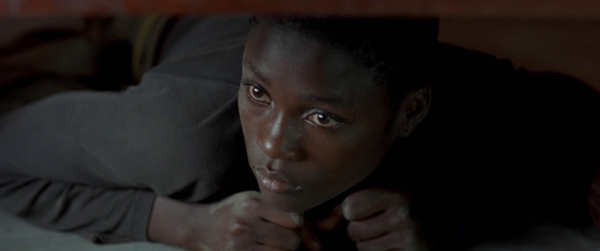
3. White Material
Claire Denis has always possessed the extraordinary ability to imbue a single image with seemingly opposing sensations, granting physical objects both thrilling immediacy and impressionistic ethereality. White Material—which follows a white coffee plantation co-owner (a towering Isabelle Huppert) who refuses to leave her land as the unnamed African country around her devolves into internecine violence—contains Denis’s usual bounty of complex visual riches: the flexing of fingers against the rushing wind; the sickening slide of a blade across a young throat. Indeed, collapsing dualities inform White Material on every level. Denis envisions an unraveling postcolonial landscape where false dichotomies—black/white, personal/political, past/present—fester and explode into a chaotic swirl. The film presents the details of the conflict as elliptically as it does the fractured relationships between its characters, suggesting how the region’s pervasive historical injustices flow into (and silently warp) private experience. What results is a waking nightmare whose breathless pace plunges the viewer into pandemonium even as its gaze remains probing, clear-eyed, and mournful. As much an examination of its heroine’s fraying—and flawed—sense of identity as a poetic evocation of national tragedy, White Material leaves us in a state of fraught ambivalence, troubling our consciences and haunting our dreams in equal measure. —MC
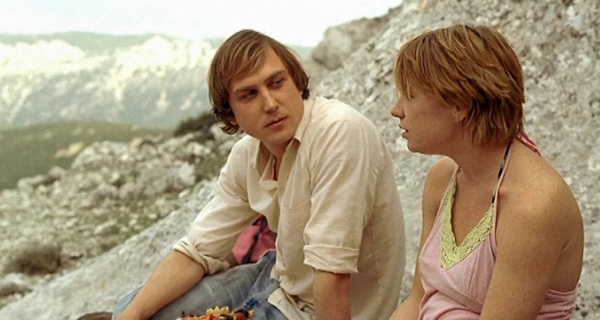
4. Everyone Else
The greatness of Maren Ade’s second feature can sneak up on you. Affectlessly naturalistic, steeped in the mundane but not ostentatiously so, Everyone Else moves with such fluency that you almost take the mastery behind it for granted. But that inability to admire it from a remove speaks to the film’s achievement. For Ade keeps her eyes on Chris and Gitti, her protagonist couple, played by Lars Eidinger and Birgit Minichmayr, the whole time—not once does she look up at the audience to see how it’s playing. Nothing is done for effect. The result is an unsparing movie that represents the frictions and disappointments of coupledom without the showy histrionics that many other movies—both great and not-so—resort to. Despite its intimacy and relentless gaze, the movie never quite finishes the portrait it paints. Multiple viewings yield new views, shift our alliances, color our perceptions anew. “Why do you think you know me so well?” says Chris at one point. We do, and yet we don’t. That slipperiness that is so much our essence—the different selves we assume when we’re alone, with lovers, with other people, over time—is the subject of Ade’s tour de force. —EV

5. Another Year
“Another year, another Mike Leigh movie,” seemed to opine much of the cognoscenti about this wondrously humane yet tricky and hard-edged film—a response which fitfully ignores both the fact that a film from this director, no matter where it falls on the Leigh spectrum, is never ho-hum, and that Another Year feels both like a summation of Leigh’s work and a quiet revelation. Nearly everyone who has written about Another Year has focused on the character of Mary—the eternally unchaperoned, nearly alcoholic sad-sack played with potent mannerism by the brilliantly pathetic Lesley Manville—and understandably so, since Mary makes herself the focal point of any given scene (her atomic, very tardy entrance at a barbeque, and her subsequent obliviousness to everyone around her, including, most hilariously, a friend’s new baby perched conspicuously center frame, is the film’s best gag). Yet it’s with Jim Broadbent and Ruth Sheen’s terrifyingly simpatico Tom and Gerrie (their cartoonishly compatible names a sick joke for any nearby lonelyhearts) that Leigh makes his strongest statement about the precariousness of a certain class of modern domestic living. While both Tom, a geologist concerned with his carbon footprint, and Gerrie, an excellent listener and social worker, are by any definition capital-c caring (for the environment, for their fellow man, for each other), they are also such a bastion of good will and righteous advice that they become impenetrable, their happiness a fortress that keeps all else out. Leigh poignantly structures his film via one year’s life cycle, and as we watch Tom and Gerrie’s literal garden grow (and frost over: Another Year boldly ends in winter), we also witness those who satellite around them and who rely on their nurturing wither (not only Mary but also big and blustery college pal Ken, and Tom’s ashen, helpless brother, Ronnie—indelible both). A more penetrating continuation of Leigh’s last film, Happy-Go-Lucky, Another Year is a stealth gutsy investigation into the foundations of happiness itself that comes across as, yes, just another lived-in Mike Leigh drama. If only any other filmmaker working today could harness life’s daily joys, tragedies, and all that difficult stuff in between with as much loving care. —MK
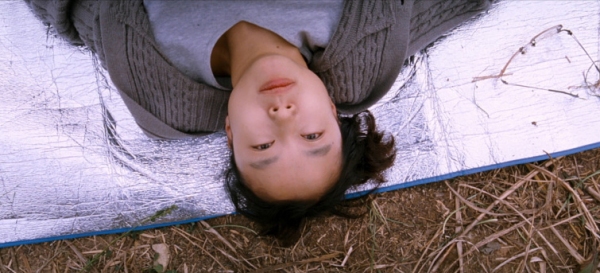
6. Secret Sunshine
Better late than never: due to the vagaries of international distribution, Lee Chang-dong’s 2007 Cannes entry makes the list of 2010’s best films—after the director’s follow-up, Poetry, has already gone one round on the festival circuit. Actually, it’s instructive to look at the two films as a diptych on grief: if Secret Sunshine is a more obviously dazzling piece of work, it’s because Lee is working in a heightened emotional register. Jeon Do-yeon’s performance as a woman coping with the murder of her young son is as remarkable as advertised. Rendered a shuffling blank in the aftermath, the actress’s Shin-ae grasps desperately at metaphysical escape hatches (joining an evangelical Christian sect) before embarking on a fugue of self-destruction worthy of Lars von Trier. If the film were merely focused on Shin-ae, it might be unbearably intense (or eventually mawkish), but Lee wisely gives ample screen time to the great Song Kang-ho (The Host) as a mechanic whose unfaltering attraction to a woman who’s obviously damaged goods goes beyond a mere subplot—it suggests that Lee’s study of obsession as a simultaneously damaging and sustaining force is provocatively two-pronged. —AN
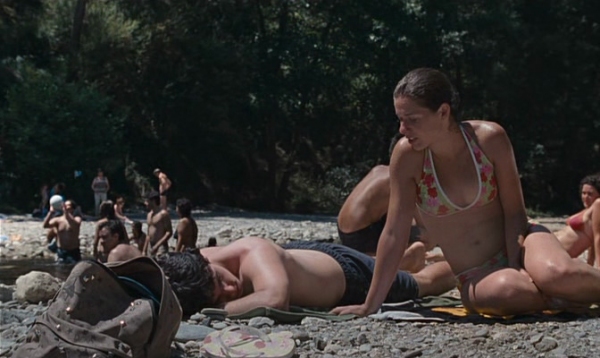
7. Our Beloved Month of August
In terms of movies, the month of August generally does us no favors. Usually the staging ground for Garfield sequels, romantic comedies assigned declaratives instead of titles (Here’s the Thing, coming December 2014!), the dog days of summer are, for cinephiles, often the breeding place of winter’s nightmares. At least that’s true in the U.S. Turns out that in Portugal, August is the time when crafty, inventive directors like Miguel Gomes can take the evaporation of financing for a narrative feature as an excuse to hit the road with the crew, grab some footage at a bunch of music festivals, stage hilarious meta-cinematic dialogues about making the film that was to be, and somehow wind up back in the midst of an honest-to-goodness story after all (one that takes the form of an incest-musical no less). This description hardly captures the pleasures of stumbling through the wholly sui generis Our Beloved Month of August. There may have been no more powerful or pleasurable moment in theaters in 2010 as that point, very late in the film, when it becomes clear that Gomes has managed to coalesce his shambling mess of a movie all around you, turning documentary subjects into movie characters and bending casual ethnography to the whims of fiction . . . or was it the other way around? In 2010, no American filmmaker succeeded on purpose as grandly and intelligently as Gomes, who worked from deep within the jaws of defeat. —JR

8. The Social Network
Maybe it isn’t that good. Start with a well-researched book about a current trend, get a writer with a shrewd ear for cultural relevancy to turn it into a snappy screenplay, hand it off to a sophisticated mainstream director, then let cover stories, message board buzz, and tepid controversy bully tastemakers into crowning it the movie that defines a generation. But, tempting as it is to view The Social Network as a slick and artful swindle, there wasn’t a more invigorating two hours in 2010. Aaron Sorkin has perfect pitch for young men’s assholism and predatory insecurity, and the neurotically rattled-off dialogue flatters the audience with a tingling complicity—the conceit that every Facebook (or even internet) user is a small player—somehow without condescension. “Compelling” is often confused for rich—it’s why HBO dramas are so often overrated—but I feel like The Social Network will repay distant reviewings because of the rigor of its style and its patina of journalistic vérité, which captures the mood of a specific moment in time. No one does “all digital” moviemaking with more invisible polish than David Fincher and his editors Kirk Baxter and Angus Wall (though the added cold-weather breath is an unnecessary distraction). I didn’t notice the reported thing about it being edited like a web browsing session (I guess that’s the point), but the thing ticks by with a grace that’s hasty but never frivolous. And as the pampered, beleaguered, “Harvard gentlemen” twins Cameron and Tyler Winklevoss, Armie Hammer delivers dual portraits of doofus entitlement for all time. —JS
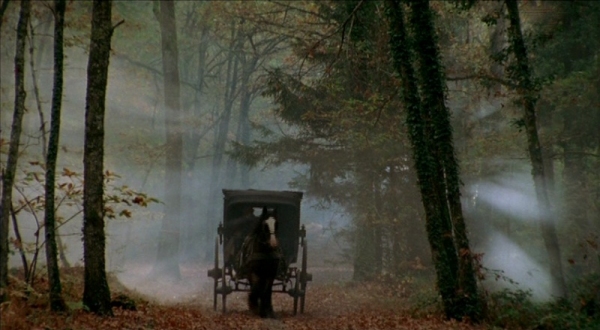
9. Bluebeard
In the frame story of Catherine Breillat’s Bluebeard, two prepubescent, modern-day sisters read aloud Charles Perrault’s 17th-century fairy tale about a French nobleman who murders his wives and keeps their bodies locked in a cellar. The younger and more precocious Catherine torments the elder Marie-Anne by reading the gory details with particular relish (as a five-year-old Breillat did with her own sister), and the director’s thirteenth film delves into violence with similar zeal, starting with the slaughter of a goose, the film’s first decapitation. This being a fairy tale, we know what’s to come: a heavy door unlocked by a tiny brass key, a gaping hole in the attic. But the ways these thresholds are crossed, and the fates that befall the film’s two pairs of sisters—both the gingham-frocked Catherine and Marie-Anne and Marie-Catherine and Anne, their counterparts in the fable—occur as if completely new, startling and devastating in their swiftness. The story about female curiosity and desire is pared down here, with minimal Middle Ages period décor that consists mainly of stone, tapestry, and the claustrophobic spaces of Bluebeard’s castle. In Breillat’s hands, Marie-Catherine is a heroine who knows exactly what she’s doing, less a child-bride than an assured woman, one who demands a small bedroom for herself on her wedding night. The connection of maturity with knowledge is explicit: when Bluebeard discovers a spot of blood on Marie-Catherine’s nightgown, stained from the key she dropped on the floor of the secret chamber, they both know the grisly punishment that awaits. It’s a dangerous tale, but not exactly a cautionary one, as Breillat, unsurprisingly, isn’t interested in temperance. In some ways, she’s always been pushing us toward that forbidden door, our noses turned to the blood pooling beneath it. Because for her, whatever the consequences (and they are serious in this film), knowledge—the kind of self-knowledge gained when we willingly disobey the rules imposed on us—is worth every risk. —GY
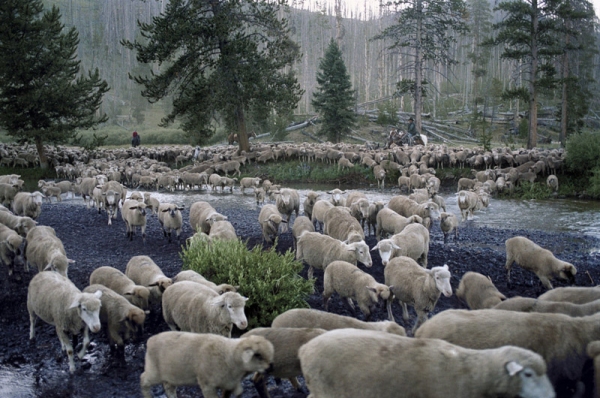
10. Sweetgrass
A prime candidate for scene of the year: a sheepherder stands on top of a Montana mountain, dials his mother on a satellite phone, and then proceeds to bellyache about his bum knee, his maimed sheepdog, and the punishing solitude demanded by his line of work; meanwhile, the camera takes in the majestic view with a slow 360-degree pan. Ilisa Barbash and Lucien Castaing-Taylor’s documentary Sweetgrass deglamorizes the cowboy mythos, quietly, good-humoredly exploding the notion that anybody can tame this terrain (the sheep here also appear to have inscrutable minds of their own), while simultaneously paying tribute to an expiring way of life that has nonetheless partially adapted to the times. At one point, the chirping of the sheepherders’ walkie-talkies harmonizes with the animals’ pervasive baahing, creating an almost otherworldly warble; at another, a long line of sheep files down a small-town Main Street, nonchalantly passing a Radio Shack. Underscoring the theme of obsolescence by degrees is the film’s very look. Sweetgrass was shot between 2001 and 2003 on early-aughts-vintage digital video, which today appears distinctly consumer-grade. Whether Barbash and Castaing-Taylor ever intended to fold the (financially and logistically sensible) medium into the message is up for debate—both are anthropologists as well as documentarians, and their mode is otherwise strictly observational—but the standard def also somehow makes the vistas of Sweetgrass even more stunning, imparting to them a bit of home-video poignancy. —BM
